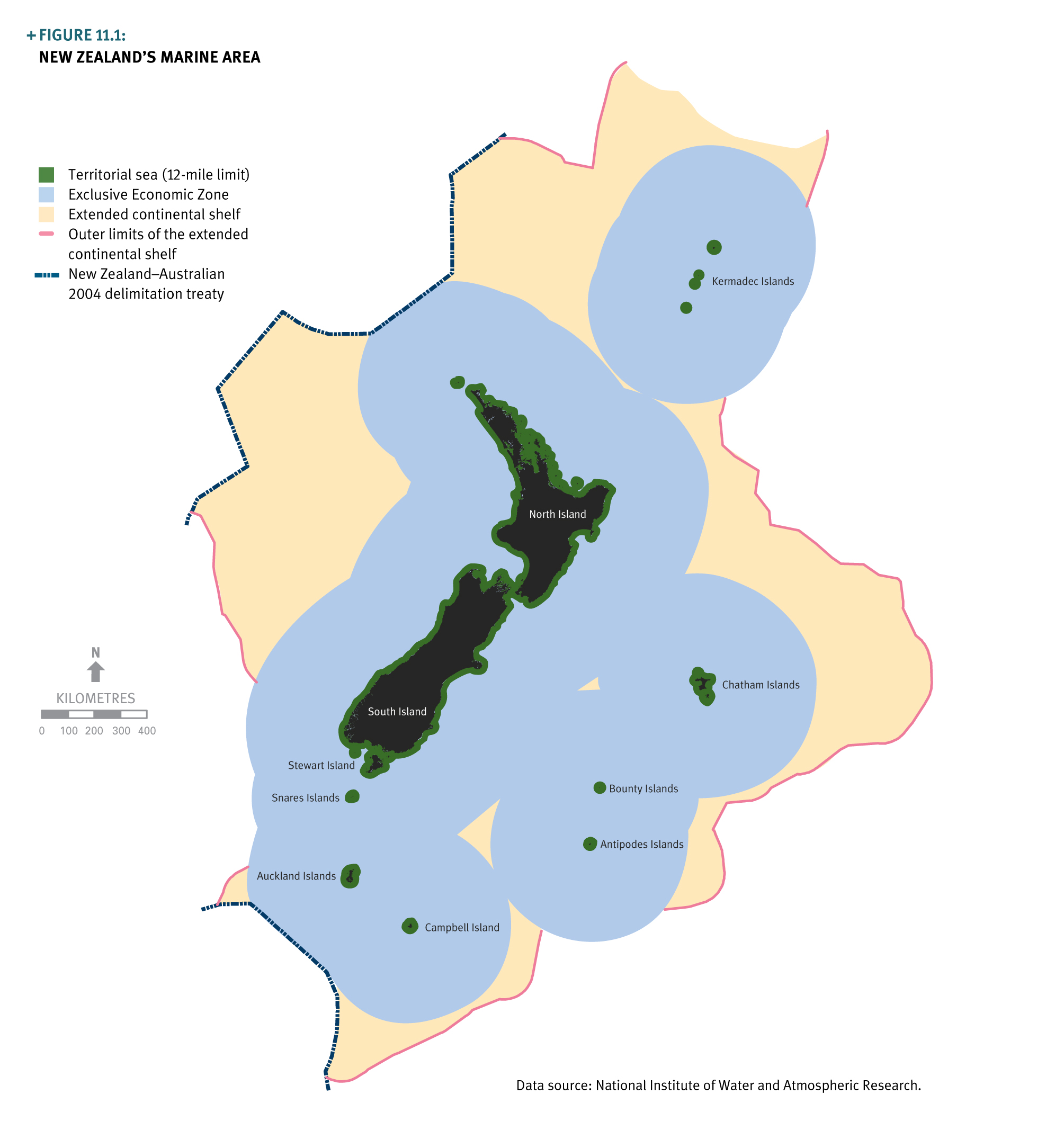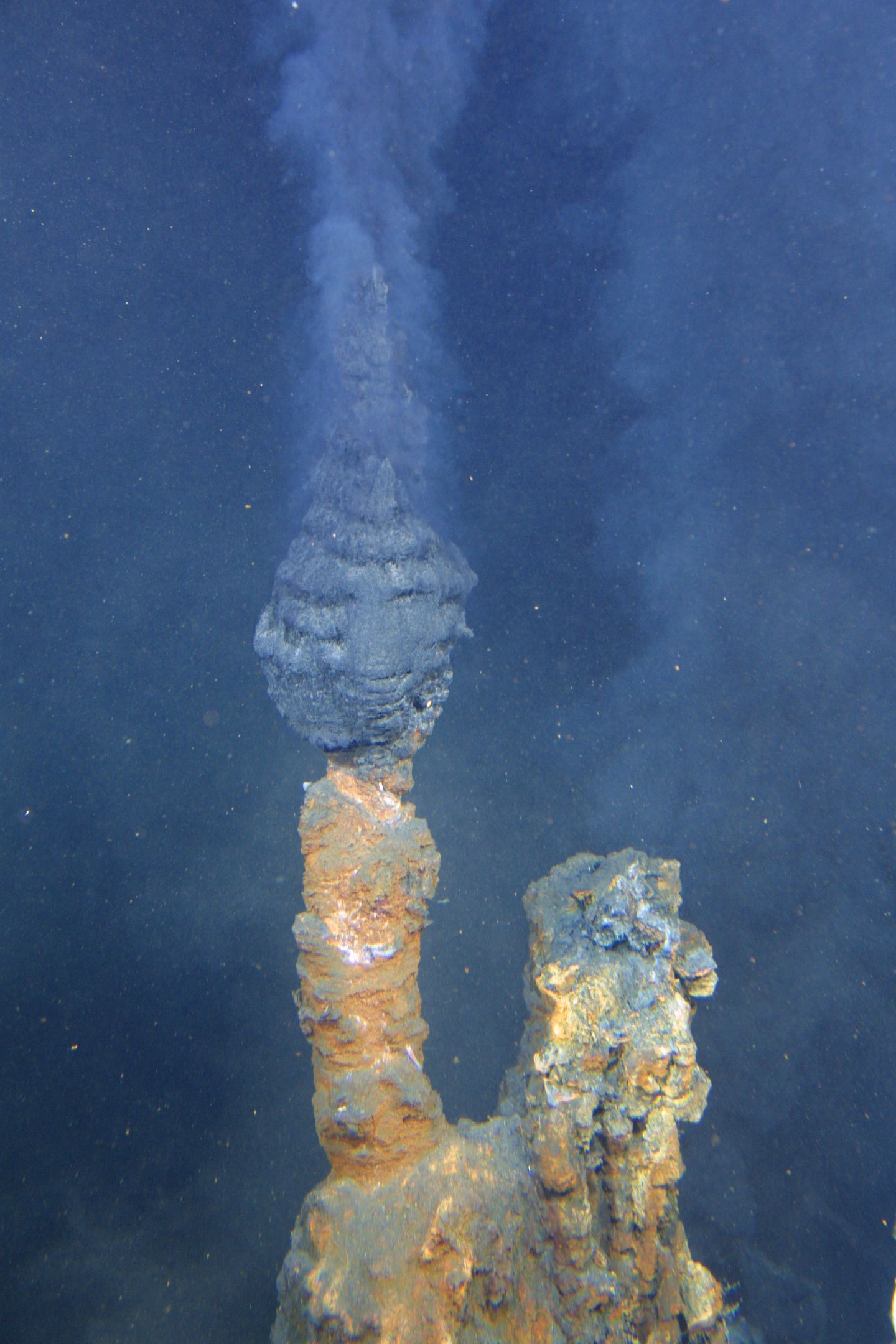All that glitters is not gold: what is the value of mineral deposits in the deep-sea?
One of the great challenges facing all societies is to achieve a balance between economic growth, sustainability and environmental integrity.
One of the great challenges facing all societies is to achieve a balance between economic growth, sustainability and environmental integrity. This problem can be expressed in several different ways, but striking the balance between factors such as economic development, job creation, sustainability and environmental health is far from easy. Indeed, even within a single category such as economic development it may be hard to balance the counteracting forces of development opportunity in one area (e.g. mining) and lost opportunity in another area (e.g. tourism).
New Zealand is a maritime nation, with an Exclusive Economic Zone (EEZ) and Extended Continental Shelf (ECS) totalling about 5.7 million km2. It is an area of complex seafloor topography, characterised by extensive plateaux, rises, basins, plains, deep trenches and seamounts. Because of the region’s very active geological nature, several areas of New Zealand’s EEZ are now of great interest for the mining of seabed minerals. One such area is the Kermadec Volcanic Arc (refer to Figure 1), which is a line of active and inactive submarine volcanoes extending from shallow-water off northern New Zealand up towards the Pacific island of Tonga.
Breaks in the submarine crust of the Earth’s surface allow cold sea water to enter into the rock, where it is heated by natural geothermal processes. This hot water, which can be over 300 °C, is forced out of the ground to form hydrothermal vent systems, which were first discovered in 1977. This heated water contains metals such gold, copper, silver, zinc and also rare earth elements. When the hot vent water comes into contact with the cold water of the deep sea, many of the minerals are deposited in mounds and chimney-like structures (refer to Figure 2). These deposits are actively formed for only a short timeframe, often less than 30 years, as local geological activity starts-up and then dies away, quite naturally. The chimneys in particular constitute metal-rich deposits and as such, the chimneys and the vent sites (collectively called seafloor massive sulphide deposits) are potentially sites of future mining activity.
Associated with these deposits, whether they are active or inactive, are well-developed and often unique biological communities. New systems are continuously being found in the world’s oceans, and it seems likely that they exist in all, or nearly all, regions where there is natural volcanic and geothermal activity. Hence, on a global scale, their biodiversity is poorly known.
Initial assessments of global mineral wealth from the seafloor, including seafloor massive sulphide deposits, cobalt-rich crusts, manganese nodules, and phosphorite nodules, put the value of these resources well into the trillions of dollars. Until recently, the high extraction costs of marine minerals, the low cost of terrestrial mining plus unexploited terrestrial reserves meant that marine deposits were not mined commercially. However, increasing consumer demand from China and India, depletion of terrestrial resources, public concern about the environmental impacts of land-based mining operations, plus technological advances have all combined to make deep-sea mineral extraction a possibility, right now.

Recently, the Canadian company Nautilus Minerals has agreed terms with the Government of Papua-New Guinea to start commercial mining for sulphide deposits in the waters of that country. New Zealand, given its natural marine mineral wealth, is likely to consider mining activities for the same type of deposits in the future. Large areas of the Kermadec Arc and the nearby Colville Ridge were licenced for prospecting as far back as 2002, and new legislation such as the Exclusive Economic Zone and Continental Shelf (Environmental Effects) Act 2012 has been enacted with seabed mining specifically in mind.

Given that the mining of parts of New Zealand’s EEZ could proceed in the near future, there are a number of key questions that need to be answered before mining commences so that the mining company/ies, the New Zealand Government and the people of New Zealand all understand and agree to the costs and benefits of this opportunity. This is all part of the challenge of achieving balance between economic prosperity and environmental protection in a country that prides itself on its “clean, green” image and where a large proportion of the public is actively and vocally against mining, oil and gas exploration. This challenge is not, of course, unique to New Zealand: many countries are now facing similar challenges. However, it is a challenge that New Zealand has to deal with now, before the experiences of other countries can be drawn on, and whilst international best practice guidelines are being drawn up for all forms of deep-sea mining and extraction activities.
The New Zealand public is generally very aware of environmental issues, both on land and in the sea. There has been recent protest against proposals for gold mining in conservation areas on Great Barrier Island (northern New Zealand) and also against oil and gas exploration in the sea. At the recent parliamentary elections (20th September, 2014), the Green Party proposed to ban all deep-sea minerals, oil and gas exploration, whereas the ruling National Party proposed active exploration and exploitation of such resources. Despite this very clear difference in political opinion, there is still a sense in New Zealand that the debate about the extent (if any) of exploration and exploitation of oil, gas and mineral deposits in the deep sea has not been thoroughly aired, and requires more comprehensive information about the environmental effects. The public is generally poorly informed about the pros and cons of seabed mining, and resource managers know too little about the marine environment to be able to make informed decisions about the benefits and impacts of such activities.
To address this knowledge shortfall, the New Zealand Government has invested substantial sums of money in scientific programmes to map the seafloor and to better understand the marine biological and geochemical environment. Ongoing research is identifying and characterising the location and extent of mineral deposits. Based on the size and economic potential of mineral deposits the mining industry suggests that one in every ten, or perhaps one in every twenty, seafloor massive sulphide deposits may be mineable in an economical viable sense. Research carried out by Nautilus Minerals indicates that vent site recovery after mining may be rapid: monitoring equipment placed at a vent site after test mining was almost completely covered by new mineral deposits after only two years. But questions still remain about the biological recovery at impacted sites. Because we often don’t know how similar the biological systems are at geographically distant vent sites it is difficult to generalise about the extent to which the entire biological community can recover, or the rates of recovery: such rates may be site-specific if suites of species are unique (endemic) to certain sites or to certain regions. Beyond this, if mining is to be environmentally sustainable and to cause minimum ecosystem damage, we need to have detailed site-specific and broader regional information about directions and strengths of current flow, and about where the new biological recruits come from (the source populations) and where they go (the sink populations). Because vent sites may act like “stepping stones” for dispersal of animals along a ridge, it is crucially important to understand the impact of mining activity at each site. The loss of an individual site to mining activity may have profound consequences on the stepping stone model of connectivity among vent sites if animals cannot disperse beyond it. Thus, science has an important role to play in the identification of sites to be mined and sites that are not to be mined (what are called “set asides”) because of their biological importance.
It is clear that the mineral wealth of the deep sea is vast and that mining technology has developed to a stage where many mineral deposits are now extractable. It is also clear that this new opportunity to access rare and commercially important metals presents society and resource managers with questions and challenges about the limits and balances of blue growth and the maritime economy. New Zealand may be one of the first countries to start commercial exploitation of marine mineral resources from vent sites. When exactly this will commence is unclear and may depend, at least in part, on the outcome of the September 2014 General Election. One of the big problems associated with the exploitation of marine resources is that everything under the surface of the sea is unseen by most members of society: there is a problem of “out of sight and out of mind”. Further debate is needed so that all members of society can make informed decisions about the balance between exploitation and conservation that we, as a society, wish to pursue. It is therefore imperative that politicians, managers and scientists make available all relevant information to the general public so that open and informed debate (i.e., engagement, not just communication) can take place before commercial mining activity commences. The lessons learned by New Zealand over the next decade or so, if deep seabed mining commences, will be relevant to many maritime countries with mineral wealth in their EEZs.
I thank my colleagues, Drs. Ashley Rowden and Malcolm Clark of the National Institute of Water and Atmospheric Research (NIWA – Wellington) for their helpful comments on this article.
Jonathan Gardner – Professor of Marine Biology, School of Biological Sciences, Victoria University of Wellington, Wellington, New Zealand. For more information, you can contact Prof Gardner at Jonathan.Gardner@vuw.ac.nz or (04) 463 5574.
